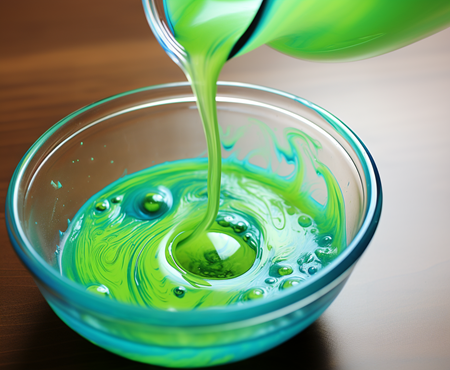Making Slime - Inquiry Investigation


Creating slime can be a fun and engaging science project that demonstrates basic principles of chemistry, polymers, and non-Newtonian fluids. Here's a simple recipe and directions for making slime:
Ingredients:
- White School Glue (like Elmer's glue)
- Borax Solution: Mix 1 teaspoon of Borax powder in 1 cup of warm water (this will act as the activator)
- Water
- Food Coloring (optional for colored slime)
- Glitter or Beads (optional for texture)
Directions:
-
Prepare the Borax Solution:
- Mix 1 teaspoon of Borax powder with 1 cup of warm water. Stir until the Borax dissolves completely. Set this aside.
- Create the Slime Mixture:
- In a separate bowl, pour about a cup of white school glue.
- If you want colored slime, add a few drops of food coloring to the glue and stir until the color is evenly distributed.
- You can also add glitter, beads, or any other small decorative items to give your slime a unique texture and appearance. Mix these into the glue.
- Activating the Slime:
- Slowly add a small amount of the Borax solution to the colored glue while stirring. Add a little at a time and mix thoroughly.
- Keep adding the Borax solution gradually and stirring until the slime begins to form and pull away from the sides of the bowl.
- Continue kneading and mixing with your hands until the slime reaches the desired consistency. If it's too sticky, add a little more Borax solution. If it's too stiff, add a tiny bit of water.
- Storage and Safety:
- Once your slime is made, store it in an airtight container or plastic bag to keep it from drying out.
- Remember to wash your hands after handling Borax or any other ingredients and avoid ingesting the slime.
Science Behind the Experiment:
The Borax solution cross-links the polymer chains in the glue, creating a stretchy and gooey substance known as slime. This is an example of a polymer—a substance with long chains of molecules. The Borax acts as a cross-linker, connecting the glue molecules and allowing them to slide past each other, creating the unique texture of slime.
This experiment can be a great opportunity to discuss polymer chemistry, the properties of non-Newtonian fluids (like how the slime can behave both as a liquid and a solid), and the importance of precise measurements in scientific experiments.
Inquiry Discussion Questions
1) How does the slime behave when you play with it?
2) What causes the behavior?
3) What would happen if you added more ingredients?
4) What variations can you make on the recipe?
5) What is a polymer?
6) What ingredients are necessary? What ingredients could be left out?
